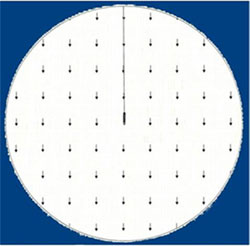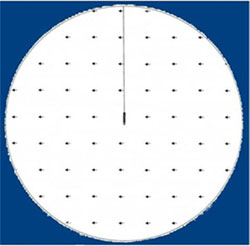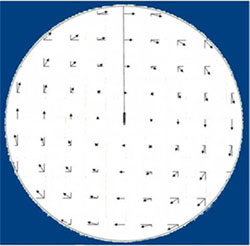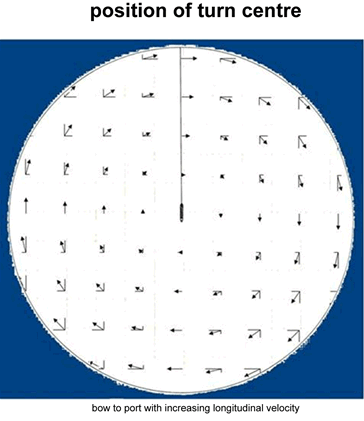Apparent motion of targets on head up
On head up display, the apparent movement of a fixed target is determined by the vessel’s own movement.
The three degrees of freedom of a vessel’s horizontal movement are:
- longitudinal velocity – surge
- transverse velocity – sway
- angular velocity – yaw
Surge
Fixed targets will move vertically in the opposite direction of the vessel

Sway
Fixed targets will horizontally in the opposite direction of the vessel

Yaw
Fixed targets will move in a circular motion in the opposite direction

The effect of a linear velocity coupled with angular velocity is to offset the centre of rotation from the vessel at right angles to the linear velocity in the direction of the yaw.

For the mathematically inclined, it can be shown that the apparent movement of any fixed target is:
Δx = Vx + ωy
Δy = Vy +ωx
Where x & y define the Cartesian location,
Vx = velocity along the x axis in meters per second
Vy = velocity along the y axis in meters per second
ω = angular velocity in radians per second
The center of the targets’ rotation will be displaced out from the vessel to where
- Vx is equal but opposite to ωy
and
- Vy is equal but opposite to ωx.
This accurate detection of the vessel’s movement may be useful in close manoeuvres, especially when anxious if the vessel will clear a target.

